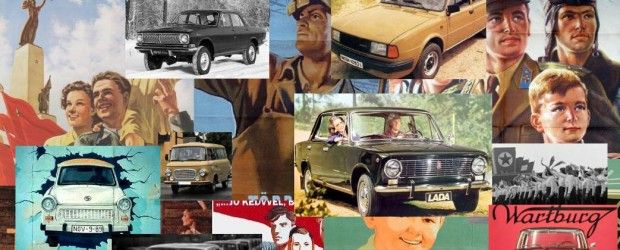Lada is a trademark of Russian car manufacturer AvtoVAZ based in Tolyatti, Samara Oblast. It was originally the export brand for models sold under the Zhiguli name in the domestic Soviet market after June 1970.
Lada cars became popular in Russia and Eastern Europe during the last two decades of the Soviet era, particularly in former Soviet bloc countries, where they became a symbol of city life.
The original Lada was widely exported in sedan and station-wagon versions, and with over 20 million units sold before production finally ended in mid-2012, it had become the highest-selling automobile to be produced without major design change.
The Lada badge depicts a Viking sailing ship.

Lada made its name in Western Europe selling large volumes of Fiat 124-based VAZ-2101 and its many derivatives as an economy car during the 1980s, but later models were less successful.
The common Lada sedan/estate, sometimes known as the Classic in the west (VAZ 2104/2105/2107 were known as Signet in Canada, Riva in the UK, and Nova in Germany), was partly based on the 1966 Fiat 124 sedan and became a successful export car. The keys to its success were: competitive price, reliability, simple DIY-friendly mechanics and unpretentious functionality. After 1980 over 15 million Ladas were badged as Rivas (UK) Signet (Canada), Nova (Germany), added to some 5 million made from 1969 to 1979, badged as 2101 (Lada 1200 sedan), 2102 (Lada 1200 estate/wagon), Lada 2103 (quad headlights, more luxurious interior than Lada 1200, known as Lada 1500s in Canada), Lada 2106 (improved Lada 2103, known as Lada 1600 in Canada)totaling over 20 million. The car was built under licence in several other countries.
Exported worldwide in the 1980s and 1990s, Lada was a big foreign currency earner for the hard-pressed Soviet Union and was used in barter arrangements in some countries. Over 60% of production was exported, mainly to western countries (the US was the only large market not to have imported Ladas). The rugged design of the Lada Classic, built with heavier-gauge steel bodywork to cope with extreme Siberian climates, poor roads and few service facilities in many parts of Russia, made heavy usage, such as 300,000 miles (480,000 km) mileage possible. Competitive pricing and ease of service made Ladas common as police cars, taxis and a range of public service and civil defence vehicles in many parts of Europe, Africa and the Caribbean.

In March 2008 Renault purchased a 25% stake in AvtoVAZ in a US$1 billion deal. This was expected to result in new Lada models on existing Russian assembly lines. The remaining 75% of AutoVAZ continued to be owned by the Russian state-owned Rostekhnologia corporation. Lada is now part of the Renault-Nissan-Lada group, the worlds third-largest by sales revenue(after Toyota and Volkswagen Group)."Fortune 500" ttp://thearticlewriter.com/autowriter/renault-takes-stake-in-lada/"Renault Takes Stake In Lada" in The Auto Writer, March 3, 2008]. Retrieved June 12, 2008. In spite of a flood of western models into the Russian market in recent years, Lada maintained its dominant market share.
2011 was to be a watershed year for the brand, with production of the classic Fiat 124-based 2105 and 2107 series models being completely moved from the Togliatti plant to the IzhAvto plant near Izhevsk,to make space for the companys forthcoming 2116 model.
In April 2012, AvtoVAZ confirmed the end of model 2107, after more than forty years.Production of the rest of the Lada model lineup which includes the Kalina, Priora and Granta continued.
In August 2012, the Lada XRAY concept car was launched at the Moscow International Automobile Salon. The XRAY was designed by chief designer Steve Mattin, formerly of Volvo and Mercedes-Benz.

